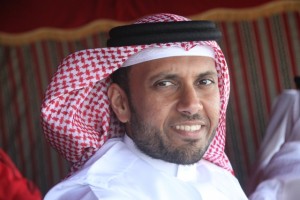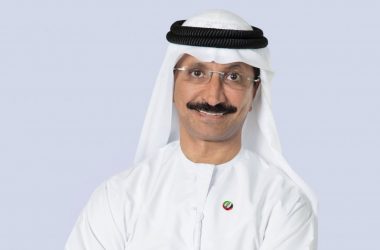 It’s been an exciting year for King Hamad University Hospital (KHUH). Situated in the Kingdom of Bahrain, the state-of-the-art hospital celebrated its official opening almost one year ago, and as with any new establishment, a magnitude of innovative projects have been in full flow since the beginning.
It’s been an exciting year for King Hamad University Hospital (KHUH). Situated in the Kingdom of Bahrain, the state-of-the-art hospital celebrated its official opening almost one year ago, and as with any new establishment, a magnitude of innovative projects have been in full flow since the beginning.
With a capacity of 311 beds and 1,731 employees, KHUH was established as part of a strategy to develop a centre for organ transplant surgeries and trauma care. From the very outset, there was a desire to use not only state-of-the-art medical technology, but also the most sophisticated information systems to eliminate bureaucracy and support rapid, robust diagnostic and therapeutic decision-making.
This led to 18 months of intense effort to examine and re-engineer almost every system ahead of the hospital opening in 2012. The IT implementation at KHUH was validated when it was voted the unanimous winner of the ‘Healthcare Deployment of the Year award’ at CNME’s awards last year.
“The critical point for us was that the hospital was brand new, in which case we had to reach our desired standards from the very start,” says Sheikh Khalid Bin Hamad Al-Khalifa, IT Director, King Hamad University Hospital.
“What we were specifically focusing on at that point, prior to the opening last year, was the medical equipment area; response times for problems with medical equipment, lack of engineers, rapid response times to any difficulties, etc.”
Al-Khalifa took on the role as IT director at the hospital from the very start back in May 2010 and heads a team made up of 25 members dealing with the implementation projects and constructing the entire infrastructure for the hospital.
After the first year warranty ran out on the previous asset management system, he says the technology became unreliable and slow to use which caused major concern at a highly critical time for the institution. Therefore, the hospital set about looking for a new system and a complete IT makeover, ready in time for the official opening.
The jewel in the crown for the project came in the form of a fully integrated asset management, biomedical engineering, real time location and passive radio-frequency identification (RFID) solution built around Infor Enterprise Asset Management (EAM). The unique combination of systems delivered an easy to use, integrated system to monitor and track staff, patients and hospital assets, analyse personnel data to continually improve work procedures and reduce waste and operational cost.
The solution combined the Infor EAM platform; Ekahau’s real time location system; Impinj’s and Active Identity’s passive RFID solutions; Unitech medical PDAs; and RFID tags from Omni-ID. Bringing all of these systems together, Symphony from Azimuth, the Bahrain based systems integrator, along with their offshore partner MCT India, delivered a state of the art, fully integrated solution for the hospital.
“The implementation took little over a year. The main point of focus was the training early on. We had Infor with us training the key users for a short period, and once this had been completed we then trained the remaining staff internally on the new system,” Khalifa says.
Information is delivered via desktop and mobile applications that not only monitor the location of staff, equipment and patients, but also apply business rules for alerting staff in the event of equipment failure, staff or patient assistance requests, infant security and more.
Integration between asset management, resource management and clinical information systems provides a truly holistic view of the hospital. Adding real time to this equation presents a huge opportunity to truly understand day-to-day operations and effect clinical outcomes and patient experience in ways that could never be imagined in the past with paper driven processes.

The operational perspective
The Infor application aims to provide a full platform to manage day to day maintenance and housekeeping activities, spanning general and preventative maintenance, resource planning, contractor management and spares management.
“As time has gone on we have begun to understand the product more and in actual fact there is far more to it than we originally thought. The system has streamlined processes which we set out to change from the very beginning, which is great, but as a bonus we’re still taking more and more from it,” Khalifa explains.
The call centre function is used to address all faults, requests or issues within the hospital. The bulletin board supports the call centre engineers to perform first line diagnostics and also provide information on specific equipment.
“Infor EAM has delivered an ability to focus management attention on those areas that will keep KHUH at the very forefront of medicine in the Middle East.”
The system ensures that the hospital complies with all statutory requirements by scheduling and controlling maintenance, cleaning, replacement and inspection tasks required for medical equipment. Furthermore, the reports within Infor EAM help hospital managers analyse performance and develop continual improvement programmes.
This continual improvement begins with active monitoring. By integrating Ekahau Wi-Fi tags, the Ekahau Real Time Location System Controller (ERC) and the Symphony user interface, the redesigned 802.11 Wi-Fi network is optimised to locate people and assets in real time and provides room level separation across the entire facility.
The primary purpose of this is to monitor the movement of controlled assets and pharmaceuticals, capturing their details and passing them to Symphony where business rules can be applied, generating alerts to relevant staff when these rules are broken. The system now alerts staff, managers and security as the keys leave their designated area of the hospital to ensure that this simple mistake can be avoided.
Elsewhere, nurses no longer search for equipment room by room. Individual staff tags provide the ability for them to rapidly search for commonly needed items. Here the integration with Infor EAM means that the ‘nearest’ item found is also the ‘nearest working’. Should a fault be found, nurses can simply press a button on the item of equipment and a work order is raised and passed directly to an available biomedical engineer.
From a management perspective, tedious and time consuming processes have been reduced or removed. For example, refrigerator temperature monitoring previously involved staff taking temperature readings frequently. This process has now been completely removed as the system automatically takes readings every 15 minutes from 50 refrigerators, alerting engineering and management personnel should the required operating limits be exceeded.
Equally, for biomedical engineers, paper-driven activities have been replaced by a tightly integrated solution that enables the online management of breakdown and preventive maintenance tasks. This is based on mobile enabled asset capture, work order management and inspections, but still provides the look and feel of original reports, albeit now system generated and on-demand.
The solution will also soon be tightly integrated with the hospital’s building management system, Wonderware, which will again utilise Infor EAM to automate the production of work orders for facilities management engineers. This will, in turn, assist the management in improving the reliability of all systems supporting the clinical staff in their primary role.
Calculating the costs
By integrating into the ERP system within KHUH, Infor EAM provides management with a clear overview of maintenance costs and the effectiveness of activities undertaken. The application enables an understanding of overall efficiency and where savings can be made or augmentation is required.
The finance department also benefits from an automated, auditable method of asset inventory management and improvements in asset security to help reduce both loss and over-provision.
Such extensive integration has enabled Infor EAM to go beyond being a platform for clinical staff to know what equipment is available for use and where it is, reducing the time spent looking for it in the first place. KHUH now has a single planning platform for equipment maintenance, cleaning and preparation that enables clinical management to plan capacity and patient intake, reducing unnecessary patient admission waiting times.
Alongside the single call centre function, a unique set of reports has been developed to assist the staff to analyse performance and implement continual improvement with regards to patient waiting times, room turn-around time, issue resolution and patient complaints.
“We have delivered a holistic solution that remains focused on improving client care and delivering the very best clinical outcomes, despite taking in data from a wide range of sources. This will be the benchmark by which medical care is judged throughout the region and indeed, the world.”
Building on success
With the EAM running smoothly and the hospital making waves in the medical sector, Khalifa and his team might be forgiven for taking a holiday. However, he says that 2013 is set to be another big year for KHUH with plenty of big initiatives lined up.
“We’re really looking into patient care in the new year – proper bed management, environmental control, things like this. We have a few really big initiatives coming up and this is a very exciting time for us,” he says.





